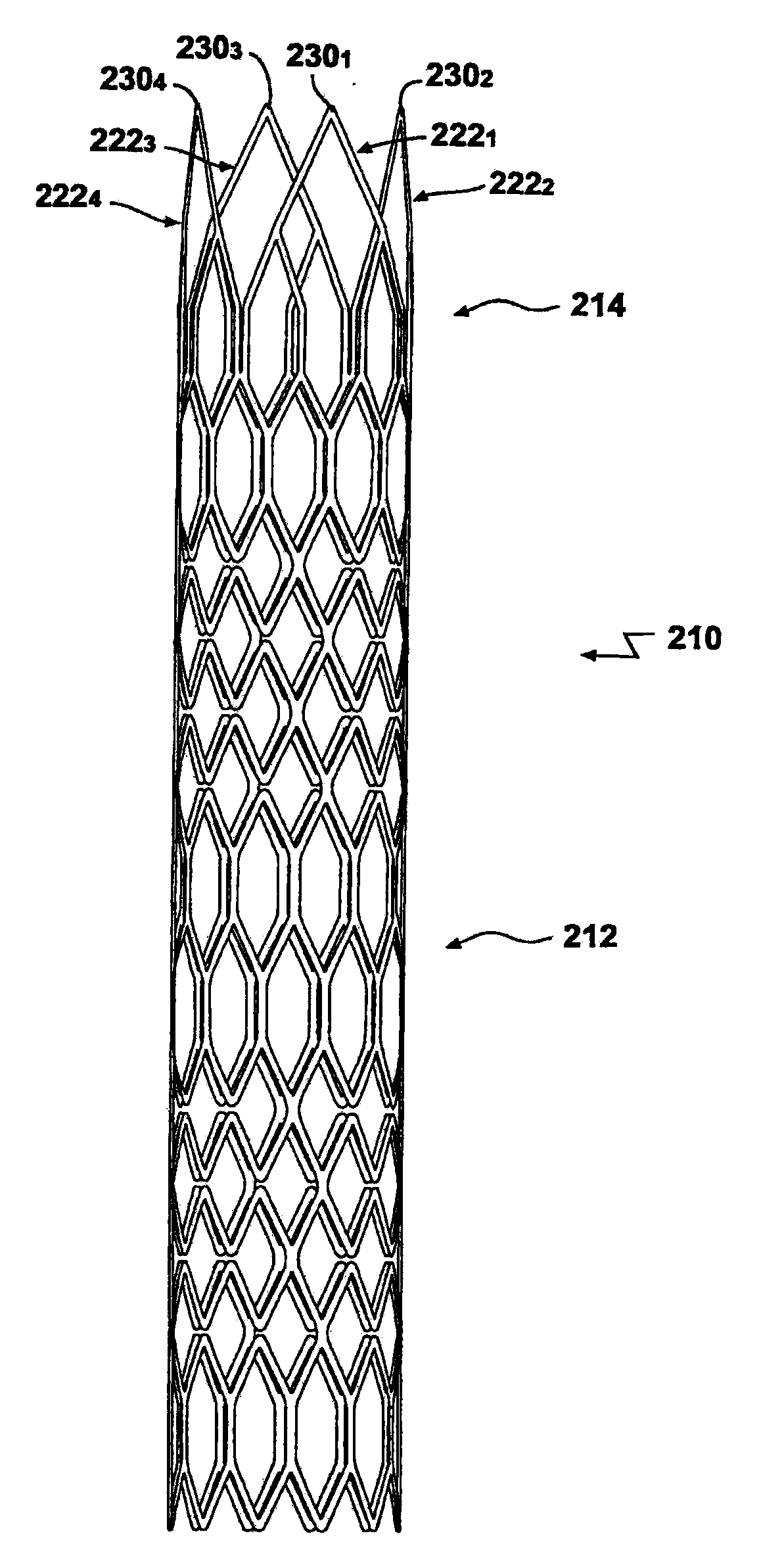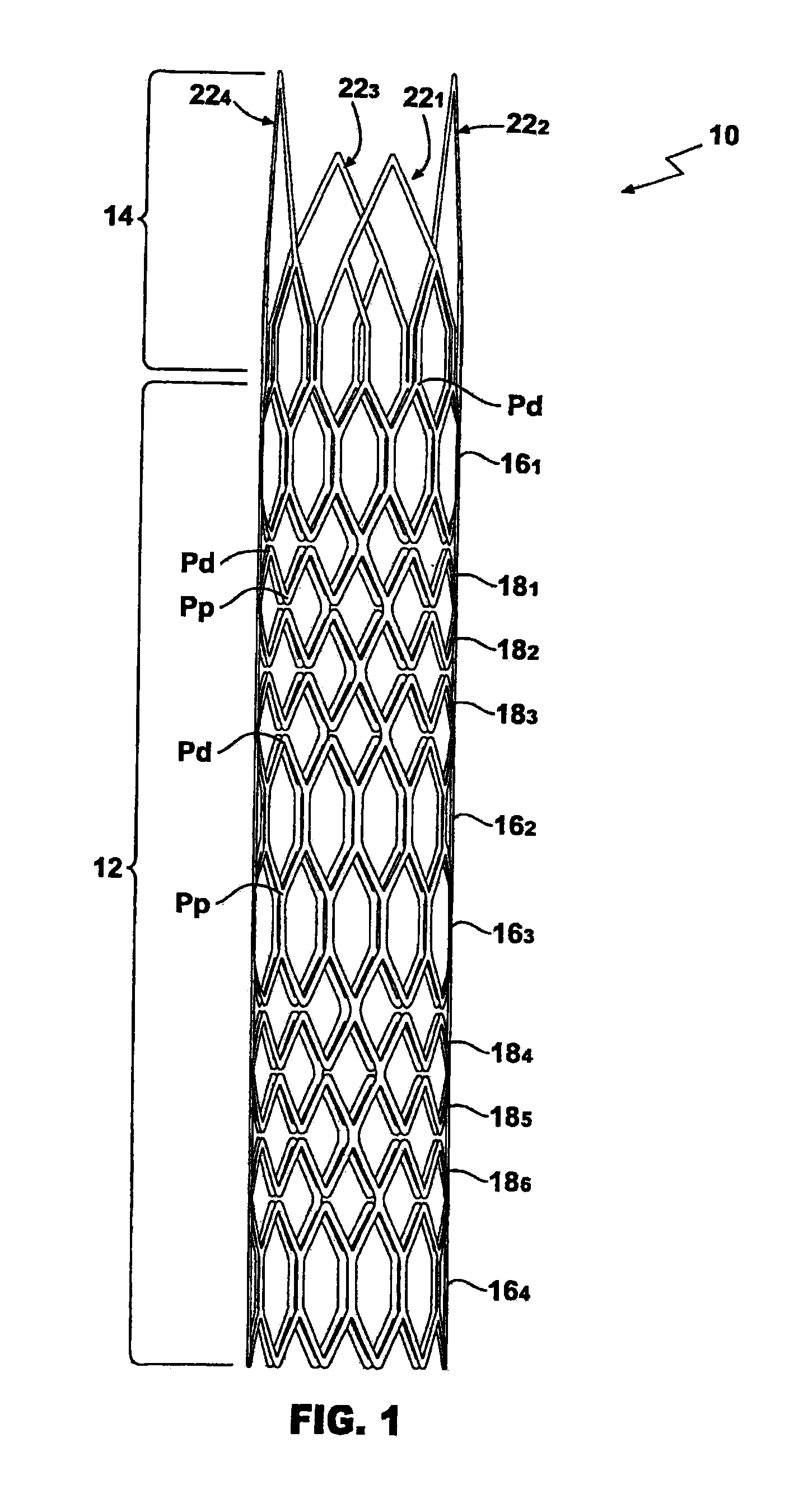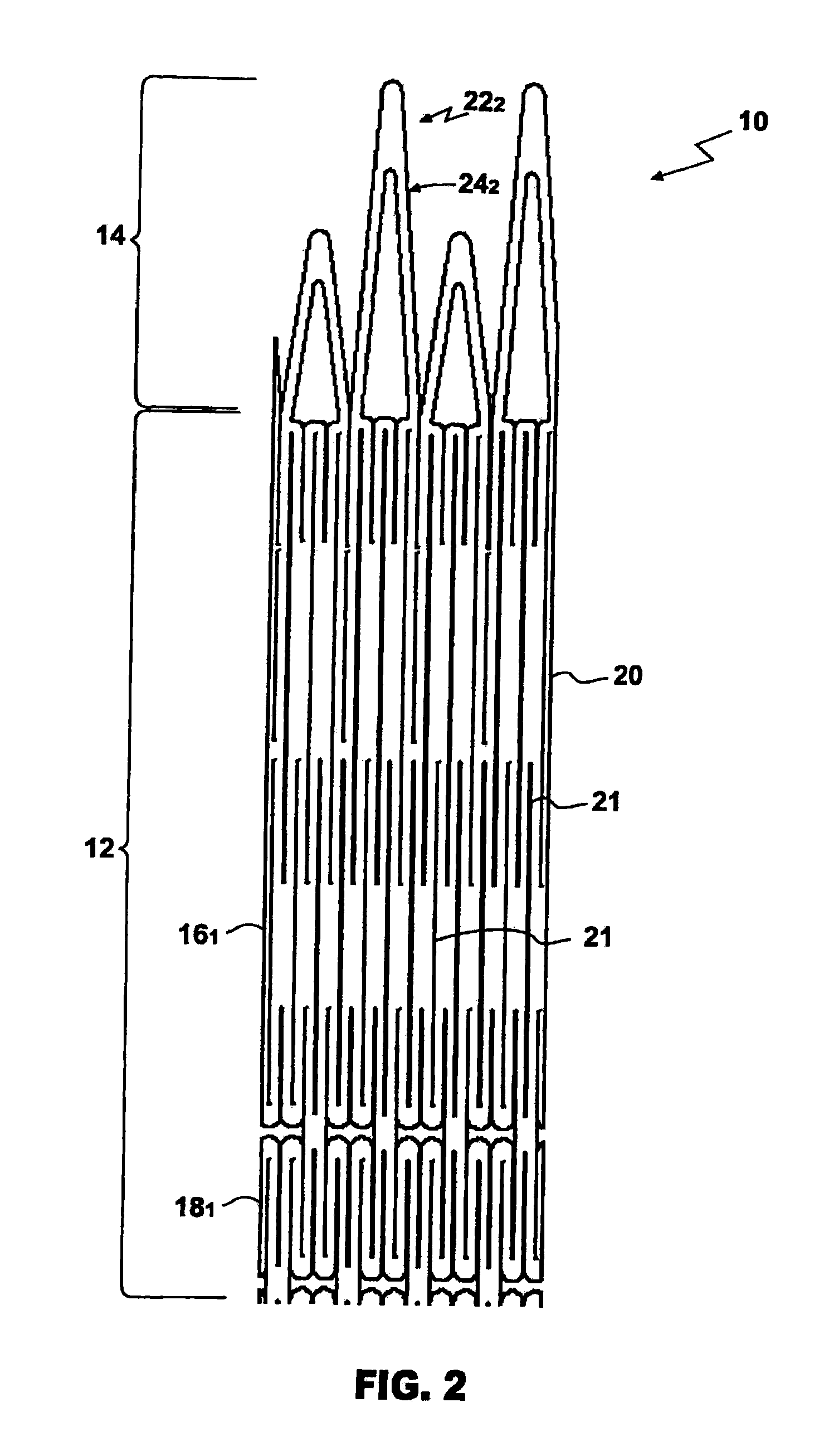It eventually results in formation of a neointima, which coats the stent and buries it completely in the vessel wall.
Most BES are less flexible than self-expanding stents and are therefore less capable of being delivered through tortuous vessels and, when a BES is deployed in a tortuous vessel, it often straightens the vessel, forcing the vessel to conform to the shape of the stent rather than vice versa.
This generally results in portions of the stent not being completely apposed to the vessel wall which in turn affects endothelialization and overall patency rate.
If shape
recovery occurs at body temperature, no heating or cooling is necessary during the delivery and deployment, provided delivery is relatively speedy.
If, however, a tortuous iliac
anatomy or other interference delays prompt deployment of a
nitinol stent with these characteristics, premature warming to body temperature could cause expansion in the delivery sheath, increase friction, and interfere with delivery.
However, while SES are preferable relative to BES in many applications with respect to achieving optimized endothelialization and increased patency rates, currently available arrangements of SES are not entirely satisfactory.
It has generally not been possible to deploy SES in the correct desired location in a vessel as precisely as in the case of BES with currently available delivery arrangements for the reason that the temperature of the SES rapidly increases to body temperature upon withdrawal of the outer sheath and therefore the stent quickly expands into engagement with the vessel wall.
Consequently, there is not always enough time to finely adjust the position of the SES as it quickly expands, and it is not uncommon for the distal end of an SES, which is exposed to body temperature first, and which therefore expands before the rest of the SES, to engage and become attached to the vessel wall in the wrong position and in turn inhibit or prevent further adjustments in the position of the SES in the vessel.
Still another drawback in conventional arrangements for delivering and deploying SES is the possibility that when delivery is protracted, the SES is exposed to body temperature inside the
delivery system.
The deployment process can then become more difficult—the device may open abruptly after being freed from the
system and may “jump” beyond the target as the SES expands during deployment.
BES cannot be repositioned or retrieved after deployment and while arrangements have been proposed for enabling the repositioning and / or retrieval of SES formed of two-way shape memory material, no practical workable arrangement has been developed.
Yet a disturbingly high 15% to 20% of the procedures fail within six months, due to the aggressive neointimal proliferation.
Therefore an exposed bare metallic stent carries a risk of inducing
thrombus formation within it.
However, to date, no satisfactory
system is available for repositioning and / or retrieving a SES.
While arrangements have been suggested in the prior art for repositioning and retrieving SES formed of two-way shape memory material, these prior art arrangements all have drawbacks and have not been adopted in practice.
This technique appears to be clinically impractical and not safe due to high risk of potential tissue and
blood cell damage.
For the stent retrieval, a
radio frequency current within the range of 50 to 2,000 kHz must be applied directly to the stent to provide partial collapse of the stent after it is heated to a temperature above 43° C. to 90° C. However, if the
transition temperature of the stent material is in the range of 43° C.-90° C., the radial force of the device will be greatly reduced at the body temperature of 37° C., and may not be sufficient for
therapeutic effect.
Heating of the stent to almost a boiling temperature can cause irreversible damage to
vascular wall and blood coagulation.
However, the stent with inwardly extending engagement members will likely require a larger
delivery system than regular tubular devices.
Any manipulation of the catheters and guidewires in the stented area may potentially accidentally engage the hooks of the stent with its subsequent dislodgment and damage of, the vessel.
This stent is designed for predominant use in the human
urethra and is not suitable for cardiovascular applications due to very large
metal surface that could be thrombogenic and increased size of the
delivery system.
This technique could be too traumatic for cardiovascular applications.
The
recovery apparatus will likely have a large profile, making this method not practical or feasible for
percutaneous use in blood vessels or other tubular organs.
As discussed above, heating of the stent to a temperature over 80° C. could be unsafe, especially with
intravascular injection of hot fluid.
Use of external
radio frequency irradiation will cause heating not only of the stent, but all tissues from the
skin surface to the stented vessel deep inside the body and beyond.
Cooling the stent to below the freezing temperature by injection of a very cold fluid into a
blood circulation for removal is also impractical and not feasible in a real clinical setting.
 Login to View More
Login to View More  Login to View More
Login to View More 


